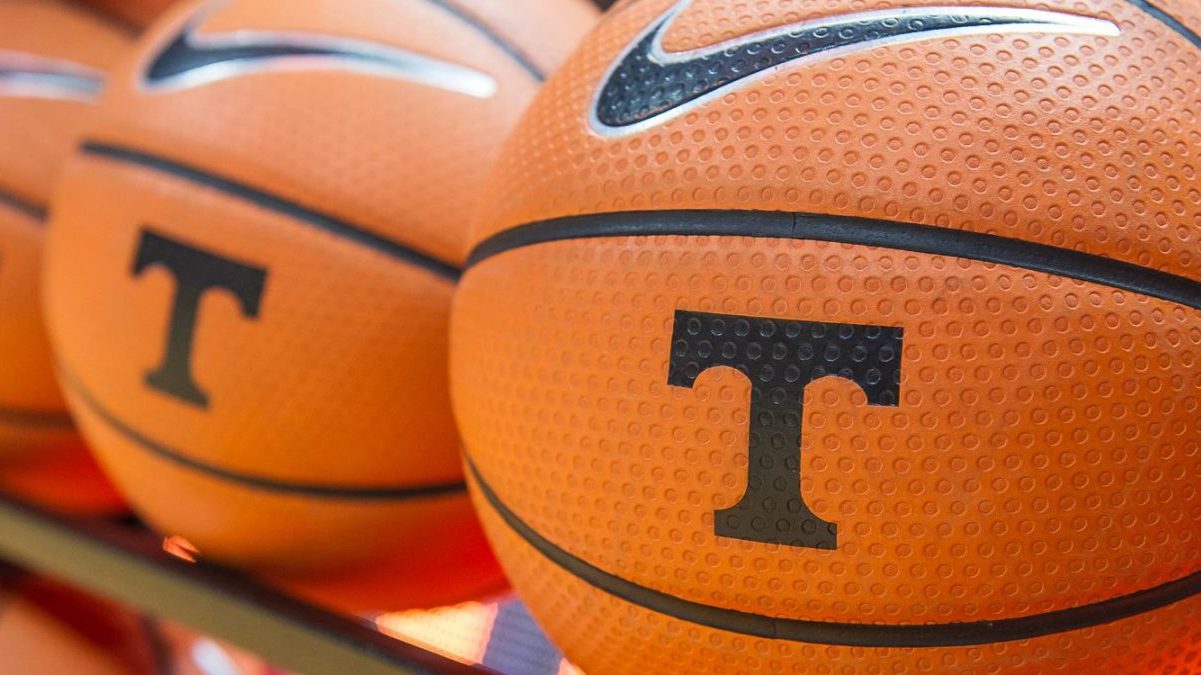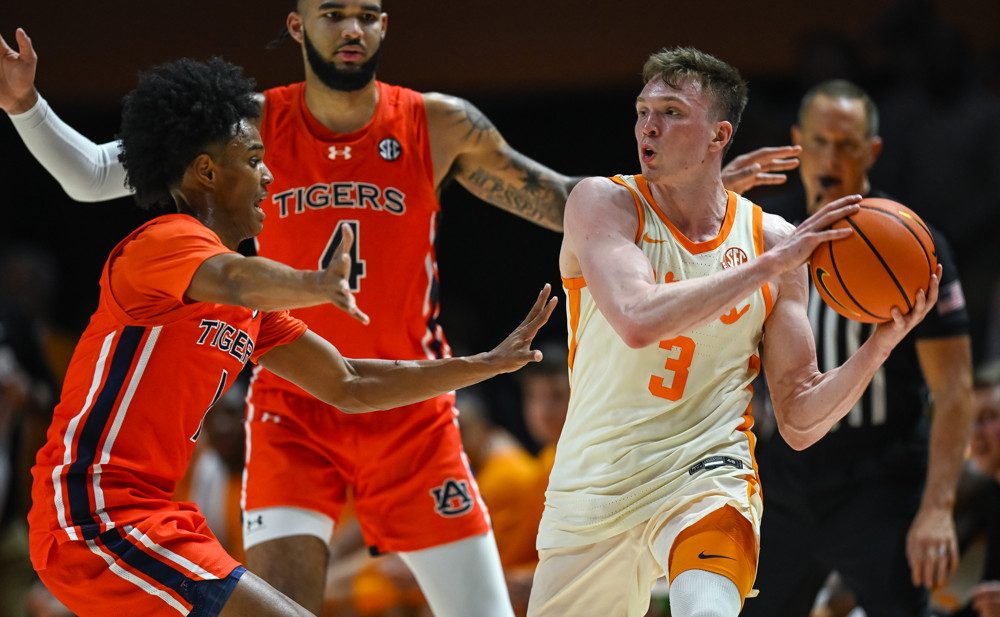Five to go. Auburn just keeps winning, still two up on the Vols. The Tigers have a pair of games with South Carolina book-ending three tests against likely NCAA Tournament teams (Alabama, at Florida, at Arkansas). Tennessee has just one such test with Florida, plus two with Georgia and a quick trip through the state of Mississippi. It’s not over, but it’s close.
The larger concern for Tennessee is (re?)discovering its best basketball with March on the horizon. A six-game winning streak and whispers of a one seed came crashing down in a 28-point loss at Alabama, and the Vols nearly squandered a pair of double-digit leads against South Carolina in Knoxville.
Tennessee is still 13th in KenPom and RPI, and right on the 3/4 seed line in the Bracket Matrix. It’s been an amazing year. How can the Vols work to ensure their best basketball isn’t behind them?
A couple of benchmarks still hold up: Tennessee is 14-1 when shooting better than 36% from the arc, 17-3 when getting an assist on at least 45% of their made baskets. Share the ball, make threes, win the game. But I think what really makes Tennessee hum goes deeper than that.
Grant Williams averages 16.2 points per game, 21.3% of Tennessee’s scoring load. The Vols don’t go as he goes – Texas A&M and Iowa State are the only power conference teams to hold him to single digits, and Tennessee won both those games – but they do go to him first. Tennessee’s offense also looks to create opportunities for Admiral Schofield, next in scoring at 12.3 per game.
Those two are generally consistent in both wins and losses. The difference between victory and defeat for Tennessee is most often what the rest of the team does. And when the Vols are at their best, the rest of the team does two things really well (all this data is compiled from Sports Reference).
One: Jordan Bowden hits threes. Tennessee is 14-3 when Bowden hits at least one three, and 12-1 when he scores in double digits. The Vols looked to him like never before against South Carolina, and he delivered: 4-of-10 from the arc and 14 points. That performance broke a chilly 3-for-20 streak in the previous five games. Bowden is still one of the league’s best shooters at 44.2% from the arc. When defenses have to account for him on the perimeter, everything runs better in Tennessee’s offense.
Two, Tennessee is at its best when its guards produce, but not too much. You never know who is going to be the one on any given night between Jordan Bone, James Daniel, and Lamonte Turner. But there is a statistical sweet spot for the three combined:
- When Bone, Daniel, and Turner account for less than 20% of Tennessee’s points, the Vols are 3-2. Two of those three wins are Presbyterian and Furman. The two losses are UT’s worst offensive performances of the year: at Missouri and at Alabama. Those are the only two times the Vols have scored less than 60 points; Tennessee’s three guards combined for 10 points in Tuscaloosa, 11 in CoMo.
- When Bone, Daniel, and Turner account for more than 50% of Tennessee’s points, the Vols are 1-2. The one win was at Iowa State, which Tennessee’s defense gets credit for as much as anything else. The two losses are Arkansas and Auburn, late-game shootouts fueled by foul trouble and great guard play on the other bench. This team is not built to win playing through its guards first.
- When Bone, Daniel and Turner account for 21-49% of Tennessee’s points, the Vols are 15-2. And the two losses are no-shame affairs to Villanova and North Carolina. All of Tennessee’s best wins – Kentucky x2, Texas A&M, Purdue, NC State – are in this realm. Their average contribution is around 31%. Here are their game-by-game contributions.
The Vols are still eighth in KenPom’s defensive efficiency ratings. They’re good enough to win even when shots aren’t falling. But Tennessee’s best basketball is a balanced effort from Williams, Schofield, Bowden from the arc, and getting just enough (but not too much) from its three guards. And this group of six players all contribute to Tennessee’s stellar assist percentage: all of them average between 1.5 and and 3.5 assists per game.
These last five games offer a last chance to improve before the stakes are raised. The strength of the league means the SEC Tournament quarterfinals will look a lot like the second round of the NCAA Tournament. If there are no upsets on Thursday in St. Louis, Friday could feature eight tournament-bound teams; seven of them are an eight seed or better in the latest Bracket Matrix. The Vols could finish second in the league and face Kentucky in their first game of the SEC Tournament. Nothing will be easy.
How easy will tomorrow’s test at Georgia be? The Dawgs have two wins in their last eight games, but both are against Florida. Mark Fox might be coaching for his job; Georgia is 14-11 but should miss the NCAA Tournament for the seventh time in his nine years. Winning really big in football can make one a little more hungry in basketball.
Their struggles may also keep Yante Maten from SEC Player of the Year, despite averaging 19.5 points and and 8.7 rebounds in one of the slowest offenses in college basketball. The Dawgs are also one of the worst teams in the nation at forcing turnovers. It could be a good opportunity for Tennessee’s offense to get back in its groove.
6:00 PM Saturday, SEC Network. Go Vols.



